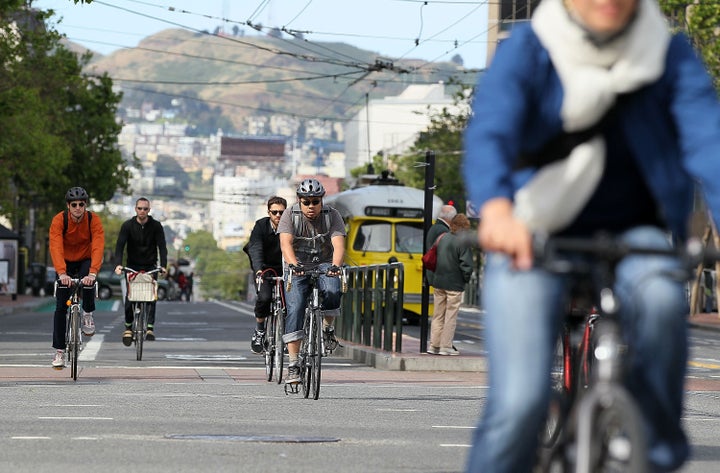
SAN FRANCISCO -- If there's one thing in San Francisco that's virtually assured, it's that Market Street is in for a dramatic facelift.
From the street's impending repaving, to the bevy of arts and cultural organizations slated to move into the area, to the whole circus surrounding Twitter and its controversial tax break, big changes are in store for San Francisco's iconic thoroughfare.
While some of this activity has already begun, before the city can implement the bulk of the changes necessary to realize its vision of transforming Market Street into a West Coast version of Times Square, there has to be an understanding of precisely how people are using Market Street right now.
Providing the answer to this question was the purpose of a public forum hosted by the San Francisco Planning and Urban Research Association on Tuesday. The forum brought together city planners and stakeholder groups, like the San Francisco Bike Coalition, to weigh in on the city's proposed transformation of Market Street from a chaotic, often dangerous, transit corridor to a full-fledged, pedestrian-friendly destination -- while still retaining the street's function, as the event's organizers aptly put it, "[as] a critical artery where much of the city's transit infrastructure comes together."
At the forum, officials from the Municipal Transportation Agency and the Department of Public Works presented the results of an in-depth study of traffic patterns on Market Street for automobiles, pedestrians, buses, trains and bicyclists. The research showed that pedestrians are, by a wide margin, the heaviest users of the corridor. Of the total 25,000 people traveling along Market Street on any given day, nearly half are on foot. About a third travel by public transportation, 15 percent use private vehicles and approximately 5 percent bike.
The portion of Market Street with the most activity is by far the block between Fourth and Fifth, where the Westfield Mall and the Powell Street cable car turnaround are located. On any given Saturday or Sunday, the area around Market and Powell can experience 50,000-60,000 pedestrians fighting their way though swarms of tourists, gawking at the cable cars and trying to figure out if the well-dressed gentleman perched on a fire hydrant and holding an enormous sign reading "No Unlawful Sex" is joking. (Note: He most certainly is not).
When MTA looked at public transportation service along Market, the results weren't particularly encouraging. The average speed of a Muni bus traveling down Market is 5.8 mph. For comparison, the average human walking speed is about 3 mph. The reason for Muni's sluggish pace is that a public transit vehicle on Market Street only spends half of its time actually moving -- the rest is whittled away waiting at stop lights, loading and unloading passengers and idling while inconsiderate jay walkers and double-parked taxis block the way.
Another major problem identified by the study is that Market Street's highest traffic zones -- Justin Herman Plaza, the Powell Street/Westfield Mall area, and Civic Center/U.N. Plaza -- have little relation to one another. Instead of functioning as a single, unified corridor, each zone is an island existing in relative isolation from all of the others.
The scope of the study was limited and, much to the chagrin of many of the forum's attendees, didn't address the question of how any of the proposed new activity in the mid-Market area (such as the addition of a 46,000 square foot shopping center complete with a massive Target store) will affect traffic conditions.
The city's construction projects on Market (the specifics of which will come out of later portions of the study and could include anything from eliminating or altering some of the street's raised pedestrian islands to converting some of the one-way streets intersecting Market to two-way thoroughfares) are tentatively scheduled to begin sometime in 2015. However, money for the project has yet to be secured.
"We're still working on getting the project funded," said MTA project manger Timothy Papandreou, as he exhorted the audience to publically push the project as much as possible. "It's your job to as well to go out and advocate for this project if you want to see it funded."
A comprehensive environmental review, a standard (not to mention laborious) step inevitably required for all large-scale projects in San Francisco, is slated to begin around the middle of next year.
